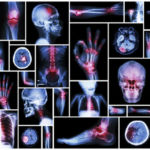Vascular Ehlers-Danlos condition is an inherited connective tissue problem that is brought about by deficiencies in a protein called collagen. It is viewed as the most extreme type of Ehlers-Danlos disorder (EDS). Common symptoms incorporate thin, transparent skin; bruising; specified facial appearance; and fragile arteries, muscles, and inside organs. Vascular EDS is generally caused by a change (transformation) in the COL3A1 gene. Infrequently, it could be caused by a transformation in the COL1A1 gene. Inheritance is autosomal dominant. Treatment is focused on avoiding complications and calming signs and symptoms.
Vascular EDS (vEDS) is an uncommon sort of EDS and is frequently viewed as the most serious. It influences the internal organs and blood vessels, which can make them split open and lead to fatal bleeding.
Individuals suffering from vascular EDS have an intermediate life span of 48 years and many will have a significant event by age 40. The life expectancy of individuals with the kyphoscoliosis structure is additionally reduced, generally because of the vascular involvement and the potential for prohibitive lung disease.
Causes of Vascular Eds
Various kinds of Ehlers-Danlos disorder are related to an assortment of hereditary causes, some of which are inherited and transferred from parent to child. If you have the most widely recognized structure, hypermobile Ehlers-Danlos disorder, there’s a half possibility that you’ll transfer the gene to each of your kids.
How many people are suffering from Vascular Eds?
The specific number of affected individuals with Vascular Eds isn’t known. The probable estimates, which consolidate counts of individuals who have been identified by hereditary testing with calculations of how well that number addresses all individuals, recommend that probably somewhere in the range of 6,000 and 8,000 individuals affected in the U.S., or around 1/40,000 – 50,000 individuals. VEDS influences all kinds of people, all races, and ethnic groups.
Common Signs of Vascular Eds
The common signs and symptoms found in the individuals suffering from Vascular Eds include:
- Transparent, thin skin with expanded vein visibility
- The premature appearance of the hands and feet (acrogeria)
- Hypermobility of little joints (“twofold jointedness”)
- Characteristic facial appearance (thin lips, jaw, and nose, small or big set eyes)
- Gum fragility and recession.
- Tendon and muscle rupture
- Sleeping with partially open or fully open eyes.
- Keratoconus
- Easy bruising
The other symptoms that are hard to diagnose are:
- Aneurysms
- Arterial tears
- Sudden lung collapse
- Artery dissections
- Uterine rupture during pregnancy
- Bowel perforations
VEDS Management and Treatment
Patient management requires a multidisciplinary care group, in a perfect world in devoted habitats for VEDS patients. These groups manage follow-up of clinically quiet patients and execute prophylactic measures. Acute onset, undefined pain requires crisis imaging by suitable means to avoid arterial rupture. Acute arterial difficulties generally require hospitalization with a traditional approach in some cases.
Life-saving processes (arterial rupture, bowel perforation, and so on) may require interventional radiology, vascular or bowel surgery. Clinical management incorporates blood pressure control to limit arteries stress. Betablockers might be of interest in diminishing arterial inconveniences, yet one has been researched in that sign (celiprolol). Angiotensin receptor blockers may likewise be valuable and are recently being researched.


